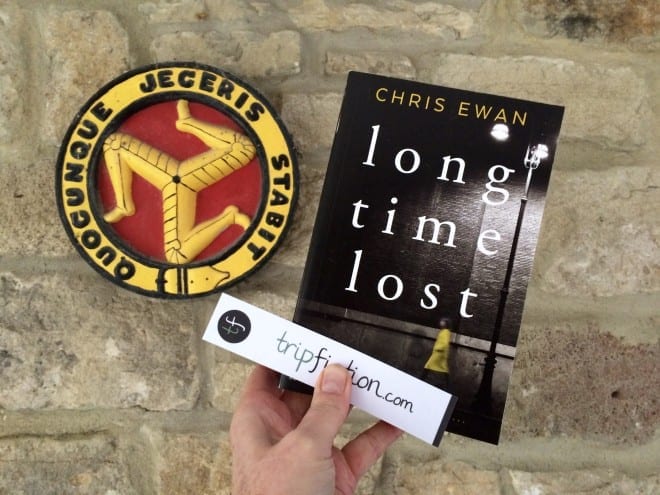Psychological thriller set in Berlin
Thriller set around Europe – and we chat to author, Chris Ewan
2nd May 2016
Long Time Lost by Chris Ewan – thriller set around Europe.
“An exciting race through Europe”
Kate is in hiding under a police witness protection scheme. When those she is hiding from arrive to kill her, Miller offers to take over Kate’s protection using his own private protection scheme. However his terms are that if she wants to live she must give up every part of her previous life – and that may be too much to ask.
Then, unexpectedly, Miller finds himself in a race against time to save the clients he has hidden away all across Europe. His clients are not always as grateful and obliging as he would hope, and, as his is an illegal protection scheme, he can’t look to any law enforcement agencies for help. Who is Miller? Can Kate trust him? Who is he protecting, and from what?
The first page of this thriller is exciting and dramatic, and the action and drama continues throughout the book, alongside a great story. Miller’s team are people you get to know through the book and are an interesting group. Their roles certainly made me stop and think about what hiding and protecting people might involve in real life.
The book travels through many European locations starting in the Isle of Man and Manchester, then travelling to Hamburg, Rome, Arles in France, Prague and Brienz in Switzerland …. Life is very hectic during these visits, so mostly the reader only gets a quick glimpse, often at a running pace, but enough is shown of some of these settings to give the reader a flavour of their character.
The themes of starting a new life afresh and hiding one’s past are interesting in themselves, as are the logistics of keeping track of these people and keeping them safe – particularly with all the positives and negatives of technology if you are trying to stay hidden.
Quite apart from the thrilling pace of the book, and the action, there are some great background stories going on, which give the characters life and interest. Most of the book is involved with only a few main characters, though there are quite a number of peripheral characters and sometimes I found I had lost track of exactly what had happened to them. However the writing was so good that I did not need to go back and check it out, the author clarified things quickly as the story progressed.
There is so much going on in this book that it is not a quick read but is easy to follow. My guess is that most readers will rush through it, but the writing style also makes it perfect for short stints of reading. Perfect for a holiday, long flight, or if you just want to escape into a great book.
Overall a great, and exciting thriller. I hope to read more of Chris Ewan soon.
Emma for the TripFiction Team
And now over to Chris who has kindly agreed to answer our questions.
TF: As you know, location is the driver behind TripFiction. There has clearly been quite some research into locale for the book. How did you choose the settings for “Long Time Lost”?
CE: From the very beginning, I wanted Long Time Lost to play out on a big canvas and for the action to take place right across Europe. I started out with a map of Europe that I laid down on the floor and from there I began to pick and choose some of the locations I wanted to write about. It felt important to me to have a balance of locations, from small, relatively out of the way places to major cities, and to spread the action right across the continent.
The novel opens in the Isle of Man, which I’ve written about before in Safe House and Dark Tides, but which I wanted to use again because of the many rumours I’ve heard of the island being used to relocate people involved in UK witness protection schemes. Some choices, like the sections set in Brienz, Switzerland, were made with my heart, because I love the area and wanted to explore it in fiction. Other destinations, like Arles, were chosen more with my head, because to my mind, at least, the walled nature of the ancient town gives it a maze-like feel which seemed to be in keeping with the novel’s plot.
TF: Helping Miller’s clients to change their outward appearance is a famous TV actress. She is a great character in the book. What made you think of including an actress for this part?
CE: On one level, all actors are trained to impersonate others, so it makes sense that Becca would have some handy tips to pass along to anyone needing to change their mannerisms as well as there appearance. Equally, though, I hope that Becca is a fun character to hang out with. She’s big, brash and loud, and given some of the darker material in the book, she provides some light relief. I really loved writing the scenes with Becca in.
TF: How much of the lives of these people hiding away from criminals is based on what really happens? How do you carry out your research?
CE: In terms of how the characters in the book disappear and reinvent themselves, I pretty much made everything up based on guesswork and common sense. But when it comes to what life is really like for people living under assumed identities and for the government officials involved in safeguarding them, I read a bunch of non-fiction books on the subject, most of them concerning federal witness protection schemes in the USA. The emotional strain placed on individuals in these schemes is extraordinary and I hope I was able to convey some of that in Long Time Lost.
TF: The characters in the books are often very high up on buildings or similar. How are you yourself with heights?
CE: Terrible! I suffer badly from vertigo. I guess this was a case of my fears giving me away on the page.
TF: How long does it take to write a book of this complexity, from starting to write to presenting it to your publisher? Do you do all the research before you start to write, or add to it as you go along? And do you have the plot mapped out beforehand, or does it develop as you go along?
CE: Every book takes me a about a year. I jot down ideas in a big A3 sketchpad (or two, or three …) for about three months and when I have enough to know roughly what the book is about and what needs to happen in the opening chapters, I start to write. From there, I’ll work on the book for around nine months before I show it to anyone.
As for research, I read a lot about witness protection before I started to write Long Time Lost. In terms of the various locations where the action takes place, for the most part I either chose places I’d visited before or knew I could get back to. I also spent five weeks living in Switzerland while I wrote the Swiss sections in the book and only wish I could have done that with every venue!
You ask about the plot and the truth is I figure it out as I go. If I’d tried plotting Long Time Lost out before sitting down to write it I never would have had the guts to attempt it.
TF: What is next for you?
CE: Another book, of course! I’m almost finished writing a new standalone thriller, this time set almost entirely in Bristol. The story revolves around an unexplained disappearance during the Bristol International Balloon Fiesta and for now, I’m afraid, that’s about all I can say about it …
A big thank you to Chris for answering our questions.
You can follow Chris on Twitter, Facebook, and via his website
Come and connect with Team TripFiction via Twitter (@tripfiction), Facebook (TripFiction), Instagram (TripFiction) and Pinterest (TripFiction)… and now YouTube


 Please wait...
Please wait...
